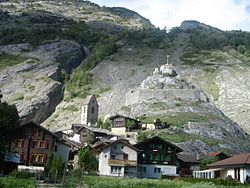
Valais, more formally, the Canton of Valais, is one of the 26 cantons forming the Swiss Confederation. It is composed of thirteen districts and its capital and largest city is Sion.
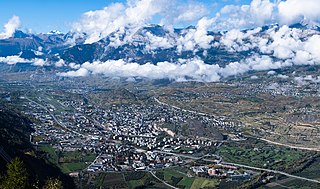
Sion is a Swiss town, a municipality, and the capital of the canton of Valais and of the district of Sion. As of December 2020 it had a population of 34,978.

The Battle on the Planta, fought on 13 November 1475 around Conthey near Sion, Valais, Switzerland, was part of the Burgundian Wars.

The Diocese of Sion is a Latin Catholic ecclesiastical territory in the canton of Valais, Switzerland. It is the oldest bishopric in the country and one of the oldest north of the Alps. The history of the Bishops of Sion, of the Abbey of St. Maurice of Valais as a whole are inextricably intertwined.

Tourbillon Castle is a castle in Sion in the canton of Valais in Switzerland. It is situated on a hill and faces the Basilique de Valère, located on the opposite hill.

The Valère Basilica, also called Valère castle, is a fortified Roman Catholic church situated in Sion in the canton of Valais in Switzerland. It is located on a hill and faces the Château de Tourbillon, situated on the opposite hill. It is a Swiss heritage site of national significance.

Majorie Castle is a castle in the municipality of Sion in the Canton of Valais, Switzerland. It is a Swiss heritage site of national significance.

The Raron affair was a 15th-century rebellion in the Valais against the power of a local noble family, the Raron family. The rebellion brought several cantons of the Swiss Confederation into conflict with each other and threatened a civil war in the Confederation. While Bern was initially successful, they were eventually forced to surrender most of their gains.

The Republic of the Seven Tithings was a state in what is now the Swiss canton of Valais during the early modern period, and an associate of the Old Swiss Confederacy.
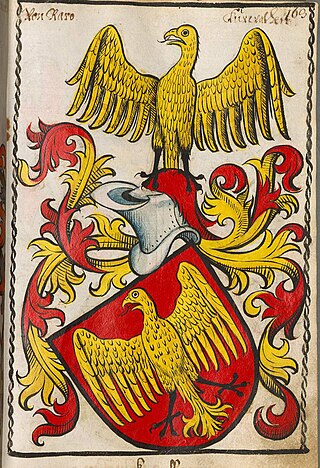
Von Raron was an influential noble family in the Valais in the late medieval period.
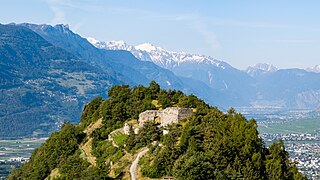
Soie Castle is a ruined castle in the municipality of Savièse of the Canton of Valais in Switzerland.
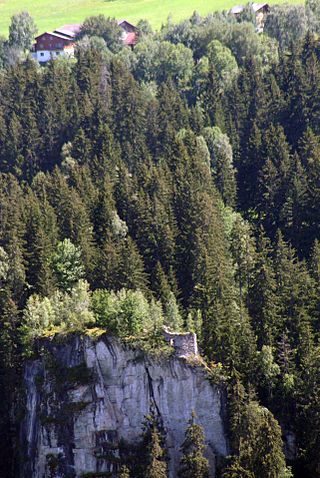
Schwarzenstein Castle is a ruined castle in the municipality of Obersaxen Mundaun of the Canton of Graubünden in Switzerland.
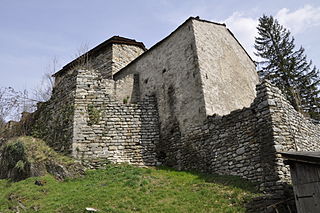
Supersaxo is the surname of a number of unrelated families of the Upper Valais. It is a latinized locational surname, from Latin super "above" and saxo (ablative) "rock"; as such it is a direct translation of German auf der Fluh

Joseph Anton Blatter was a Swiss prelate and the 73rd and last Prince-bishop of the Diocese of Sion, in the Republic of the Seven Tithings, in the modern Canton of Valais, from 1790 to 1799, and after the French invasion and dissolution of the republic, Bishop of Sion until his death in 1807.

Beauregard Castle is a ruined castle on the territory of Chippis in the canton of Valais, Switzerland. It is situated on a rocky spur at the entrance to the Val d'Anniviers.

Chalais Castle is a ruined castle in the municipality of Chalais of the Canton of Valais in Switzerland.

Venthône Castle is a fortified tower in the village of Venthône which is part of municipality of Noble-Contrée of the Canton of Valais in Switzerland. It is a Swiss heritage site of national significance.

Saillon Castle or Bayard Tower is a ruined castle in the municipality of Saillon of the Canton of Valais in Switzerland. It is a Swiss heritage site of national significance.

Saxon Castle is a ruined castle in the municipality of Saxon of the Canton of Valais in Switzerland.
